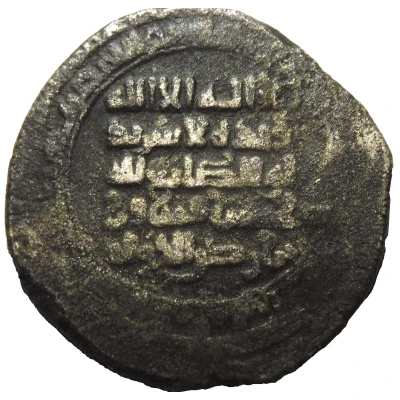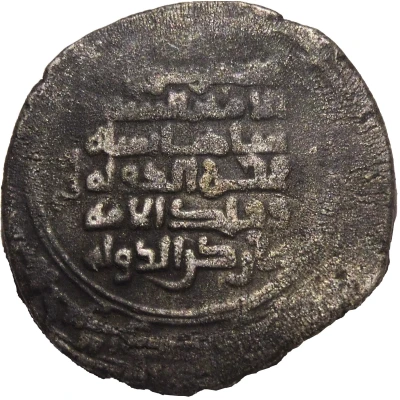


© Cycnos (CC BY-NC)
Dirham - Khusrafiruz b. Rukn al-dawla vassal of Fakhr al-Dawla - Amul
| Silver | 4.08 g | 24 mm |
| Issuer | Cities of Amul and Ruyan (Buyid dynasty) |
|---|---|
| Governor | Khusrafiruz ibn Rukn al-Dawla (circa 984-995) |
| Type | Standard circulation coin |
| Years | 381-383 (984-995) |
| Calendar | Islamic (Hijri) |
| Value | 1 Dirham (0.7) |
| Currency | Dinar (934-1062) |
| Composition | Silver |
| Weight | 4.08 g |
| Diameter | 24 mm |
| Shape | Round (irregular) |
| Technique | Hammered |
| Orientation | Coin alignment ↑↓ |
| Demonetized | Yes |
| Updated | 2024-10-05 |
| Numista | N#155332 |
|---|---|
| Rarity index | 95% |
Reverse
Inside a double circle, divided into six lines forming a square, the suzerain's titulature; around, a series of inscriptions.
Script: Arabic
Lettering:
ﺍﻟﻪ
ﻣﺤﻤﺪ ﺭﺳﻮﻝ ﺍﻟﻠﻪ
ألاميرالسيد
شاهنشاه
'فخر الدولة
و فلك الأمة
بن ركن الدولة
Translation:
lillah
Muhammad rasul Allah
al-Amir al-Sayyid
Shahanshah
Fahr al-Dawla
wa Falak al-Umma
bin Rukn al-Dawla:
"Allah,
Mohammed is the messenger of Allah.
The Emir, the Overlord,
King of kings,
Fahr ad-Dawla,
The Orb of the Nation,
The son of Rukn ad-Dawla. "
Interesting fact
One interesting fact about this coin is that it was minted during a time of significant political and cultural change in the region. The Buyid dynasty, which ruled over much of modern-day Iran, Iraq, and parts of Central Asia, was known for its cultural and artistic achievements, and this coin reflects that legacy. The coin's design, which features intricate calligraphy and ornamentation, demonstrates the artistic sophistication of the Buyid dynasty. Additionally, the fact that it was minted in two different cities, Amul and Ruyan, suggests that the Buyid dynasty had a strong system of governance and administration, which allowed for the efficient production and distribution of currency across its territories.